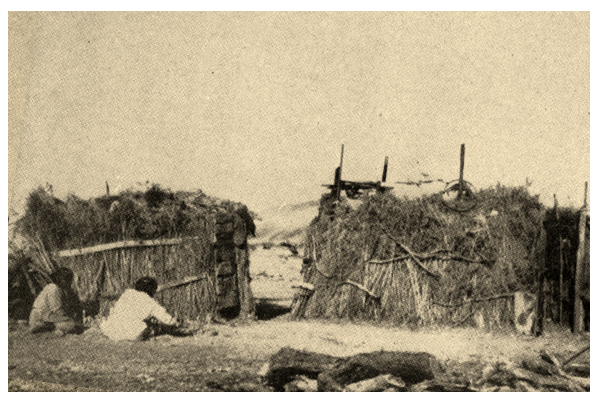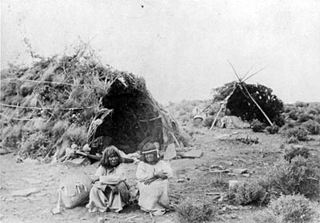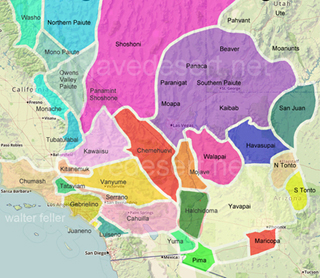Desert Indians
Several tribal groups have lived in the Mojave Desert within the past 2,000 years. The northern and
eastern portions, for example, were occupied by the
Kawaiisu,
Kitanemuk,
Serrano, and
Koso, and
Southern Paiute
bands, including the
Chemehuevi. Culturally distinct, these groups nevertheless
spoke related languages and had similar socioeconomic systems. Resource gathering was done in family
groups over wide areas, but for at least part of each year life centered on more permanent villages. The
tribes knew much about Mojave Desert resources, enabling them to gather supplies from all portions of
their territories. Each tribe was further divided into extended family units that were independant of
each other except for trade, intermarriage and occasional war. This loose-knit structure resulted
in smaller bands rather than large tribes.

The Mojave
made pottery from clay and crushed sandstone, decorating their creations with geometric
designs. The art of tattooing was also important to the Mojave, who frequently adorned their faces with them. The Mohave
would also make 500 km trips to the Pacific Coast to trade pottery and other goods for seashells and beads. Mojave legend
holds that tribal runners could cover the distance in only a few days, traveling by way of perennial
springs and the Mojave River.
The
Chemehuevi
tribe spoke a different language from that of the Mojave Indians. They occupied a particularly
barren portion of the Mojave Desert and wrested a rough living from the open land. Like their Mojave neighbors,
the Chemehuevi were highly mobile, making use of resources throughout their large territory; however, they
also had settlements to which they returned regularly. To transport goods and for other purposes, they
created complex, beautiful baskets from reeds and grasses. Like other Southern Paiute groups, they
sometimes worked small farms.
Historical Cross-section
Mohave Indians
Spanish Period
The Mojaves first appear in the written record in the records of a Spanish expedition from New Mexico led by Juan de Onate in 1604, seeking the ...Chemehuevi Indians
Early Historic Period
The Chemehuevi are the southernmost branch of the Southern Paiute people. According to Isabel Kelly's consultants, the Chemehuevis split from the ...Cahuilla Indians
Early History
The arrival of the Spanish and Mexicans in southern California in 1769 may have pushed them further inland and further into the mountains. ...Serrano Indians
Mission Period
The Serrano were a fairly numerous people when the Spanish arrived in 1769, but beginning about 1790, the westernmost of them began to be drawn into ...Kawaiisu Indians
History
The first mention of the Kawaiisu is found in the 1776 diary of Francisco Garces. At the time, his party was crossing the Tehachapis and encountered ...
Historical Sketch of the California Indians
This sketch covers five major time periods in California history ...